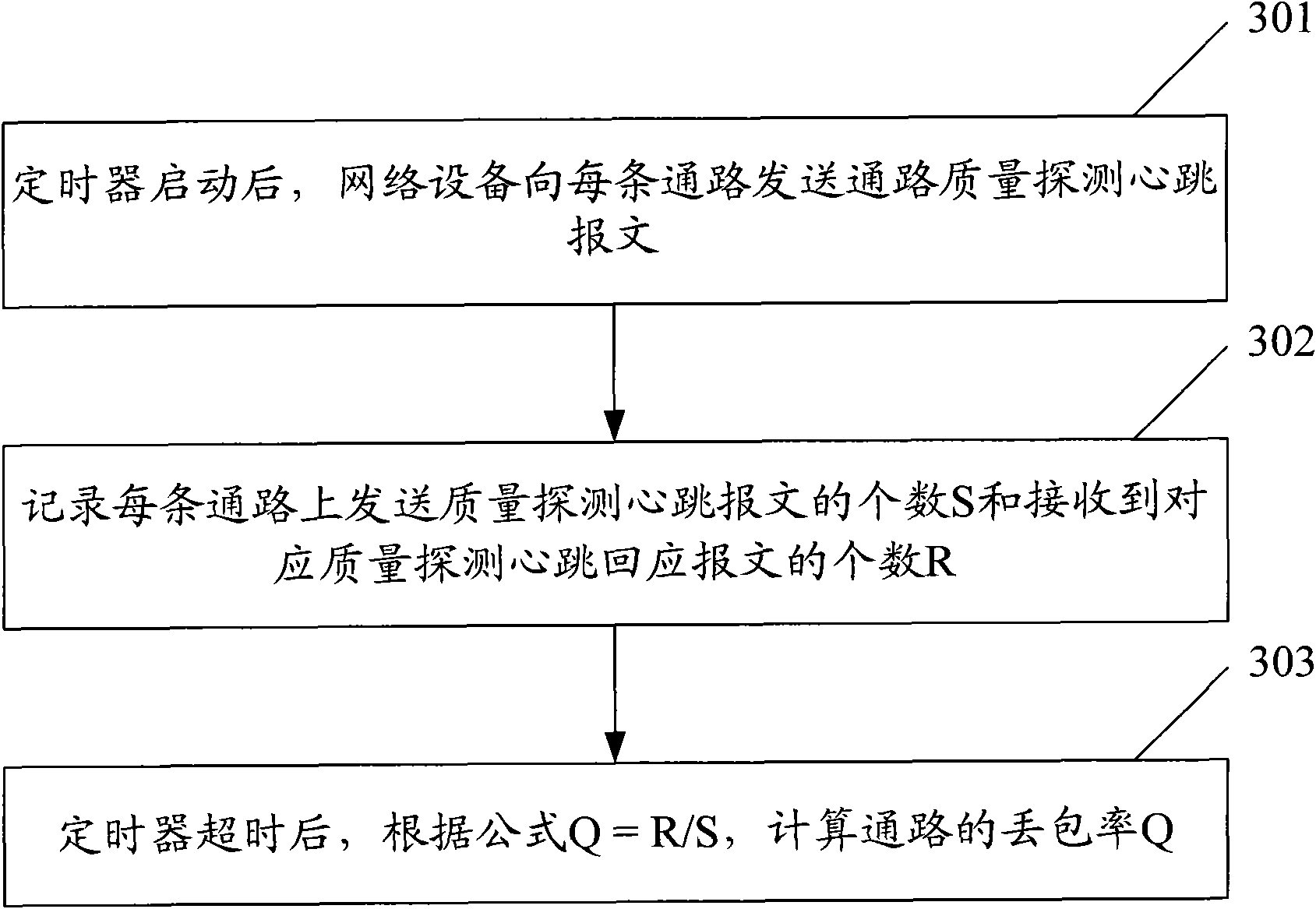Method for multi-home routing of stream control transmission protocol and device
A flow control transmission and multi-homing technology, which is applied in the field of communication data transmission, can solve the problem of not considering the data transmission rate and quality of the channel network, and achieve the effect of improving the transmission rate and quality, and improving the ability of channel failures
- Summary
- Abstract
- Description
- Claims
- Application Information
AI Technical Summary
Problems solved by technology
Method used
Image
Examples
Embodiment 1
[0059] In this embodiment, the packet loss rate of the path is selected as a factor affecting the network quality of the path, and the evaluation function is defined accordingly, so that the network selects the path with the smallest packet loss rate as the path for data transmission, and the network equipment selects the path with the smallest packet loss rate The implementation method as the channel for data transmission is as follows: figure 2 shown, including the following steps:
[0060] Step 201: Quality assessment of network device activation path;
[0061] Here, SCTP may or may not have a multi-homing function. Generally, in practical applications, SCTP is configured to have the multi-homing function. Correspondingly, after SCTP is configured to have the multi-homing function, the quality evaluation of the path is started; if SCTP does not have the multi-homing function, there is no need to start the path quality assessment.
[0062] Denote the quality evaluation v...
Embodiment 2
[0079] In this embodiment, the user can select the packet loss rate of the path, the delay size, and the maximum transmission unit (PMTU, Path Maximum Transmission Unit) of the path as factors affecting the network quality of the path, and the function of defining the evaluation is:
[0080] H(P)=PMTU / (SRTT×(Q)^0.5+0.001);
[0081] Among them, H(P) can be expressed as the maximum transmission capacity of the path; PMTU represents the maximum transmission unit of the path, and the PMTU value of each path can be obtained by referring to the RFC1191 file; SRTT represents the smooth round-trip cycle, which is used to measure the delay of the recent path. It is one of the basic parameters of SCTP. You can refer to the RFC4960 file to get the SRTT value of each path; Q represents the packet loss rate of the path, and (Q)^0.5 represents the square root of the packet loss rate.
[0082] Here, the calculation of the Q value of the current path is specifically: Q=(1-a)Q+a(R / S);
[0083...
Embodiment 3
[0093] In this embodiment, the network device can use a special detection heartbeat message to obtain the quality evaluation value of the path. Specifically, the user still selects the packet loss rate, delay size, and PMTU of the path as the path that affects the path network. The quality factor, defining the evaluation function as:
[0094] H(P)=PMTU / (T×(Q)^0.5+0.001);
[0095] Among them, H(P) can be expressed as the maximum transmission capacity of the path; PMTU represents the maximum transmission unit of the path; T represents the delay of the path; Q represents the packet loss rate of the path, and (Q)^0.5 represents the square root of the packet loss rate.
[0096] Here, the calculation method of Q value is as follows image 3 shown, including the following steps:
[0097] Step 301: After the timer is started, the network device sends a path quality detection heartbeat message to each path;
[0098] Here, the start trigger of the timer and the duration of the timer ...
PUM
 Login to View More
Login to View More Abstract
Description
Claims
Application Information
 Login to View More
Login to View More - R&D
- Intellectual Property
- Life Sciences
- Materials
- Tech Scout
- Unparalleled Data Quality
- Higher Quality Content
- 60% Fewer Hallucinations
Browse by: Latest US Patents, China's latest patents, Technical Efficacy Thesaurus, Application Domain, Technology Topic, Popular Technical Reports.
© 2025 PatSnap. All rights reserved.Legal|Privacy policy|Modern Slavery Act Transparency Statement|Sitemap|About US| Contact US: help@patsnap.com



